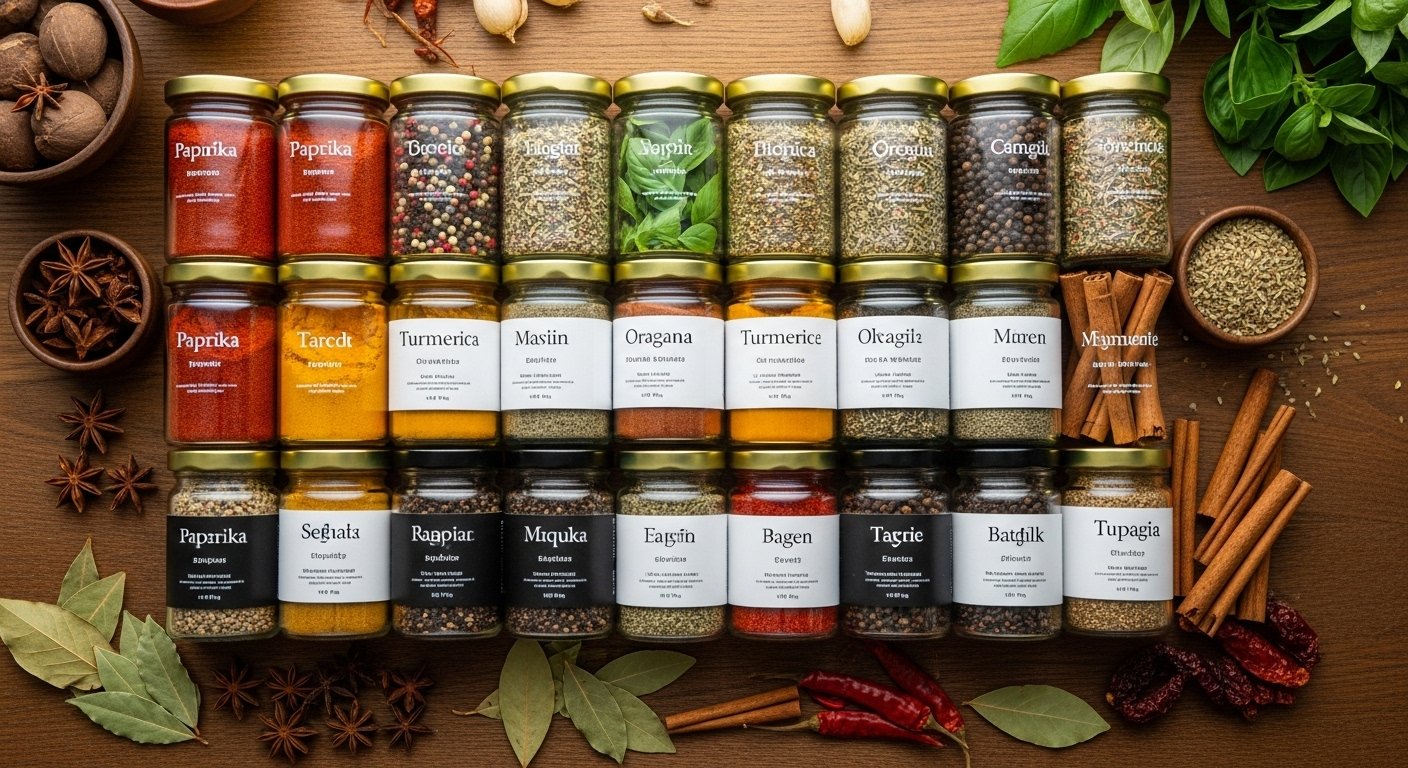Imagine preparing a meal, reaching for a spice, and finding it dull, flavorless, or worse – completely missing! It’s a common kitchen frustration, but it doesn’t have to be your reality. A well-stocked, flavorful spice rack is the secret weapon of every confident cook, transforming simple ingredients into culinary masterpieces. This comprehensive guide will teach you exactly how to build a flavorful spice rack, ensuring every pinch and dash elevates your cooking to new heights.
The global herbs and spices market is booming, projected to grow at a compound annual growth rate (CAGR) of 7.53%, from US$29.294 billion in 2025 to US$42.110 billion in 2030. This impressive growth reflects a significant trend: more people are trying to replicate restaurant-quality flavors in their home-cooked meals. A thoughtfully curated spice collection is central to this endeavor, allowing you to experiment with diverse tastes and aromas.
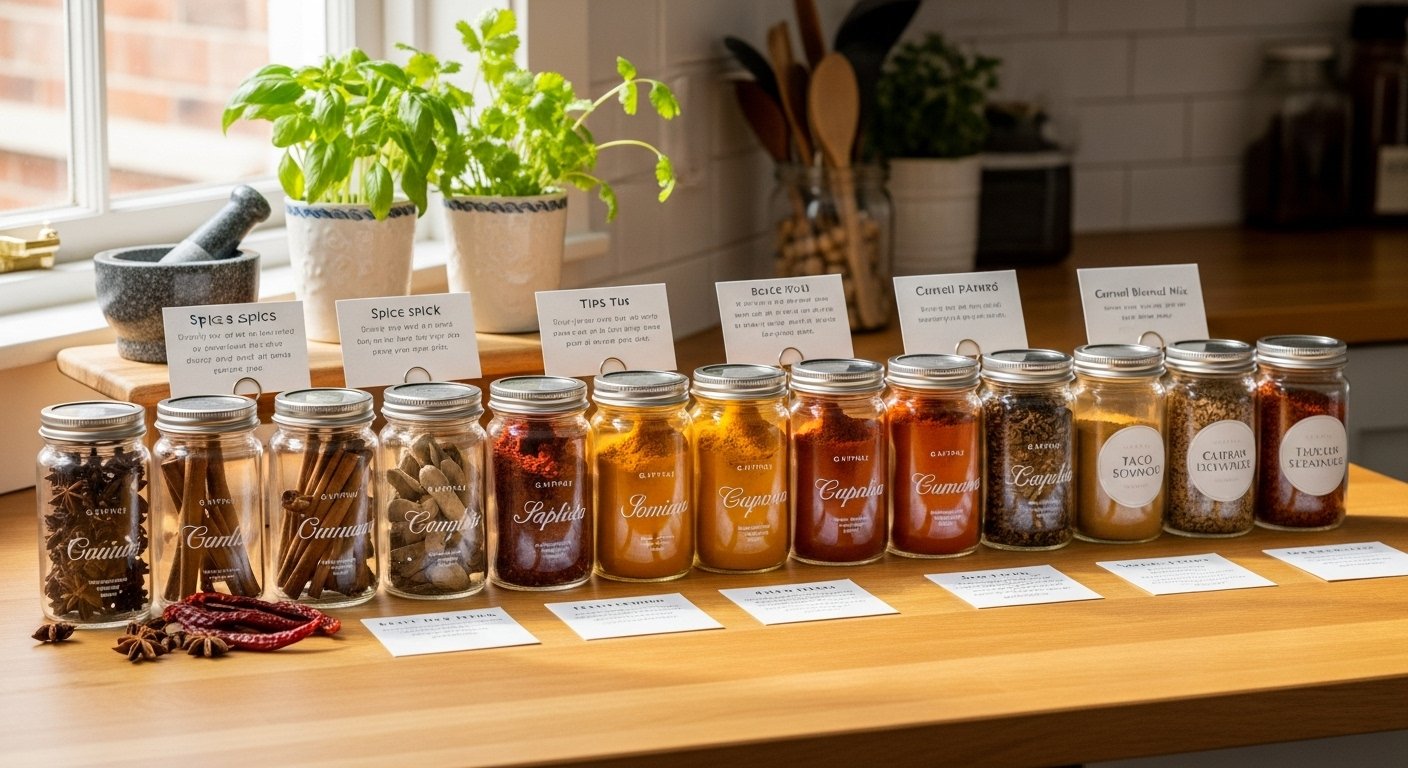
Why a Flavorful Spice Rack Matters for Every Cook
Having a rich assortment of spices at your fingertips is more than just a convenience; it’s an investment in your culinary journey. It opens up a world of taste possibilities, allowing you to infuse depth, warmth, and excitement into every dish. From weeknight dinners to special occasion feasts, the right spices are game-changers.
The Joy of Home Cooking with Quality Spices
There is immense satisfaction in crafting a delicious meal from scratch. High-quality spices are crucial for achieving that authentic, complex flavor profile that makes home cooking so rewarding. They empower you to explore new cuisines and recreate beloved dishes with confidence. For further reading on enhancing flavors, consider these 15 genius hacks to elevate everyday cooking.
Health Benefits Beyond Flavor
Beyond their incredible taste, spices offer significant health advantages. Many contain powerful phytochemicals, especially polyphenols, which have been studied for their anti-inflammatory, neuroprotective, antimicrobial, anti-diabetic, and anti-cancer effects 1, 7, 9, 16]. Incorporating a variety of spices into your diet is a simple yet effective way to boost your overall well-being. Spices like turmeric and ginger, for instance, are well-known for their beneficial compounds. [You can learn more about the extensive health benefits of various spices from authoritative sources like PubMed. [1]
Essential Spices for Cooking: Building Your Foundation
Starting a spice collection can feel overwhelming. Many wonder, “What are the essential spices for a flavorful spice rack?” The key is to begin with versatile staples and then expand based on your culinary interests. Think about the dishes you love to cook and the cuisines you enjoy.
Basic Spices for Every Kitchen
For a strong foundation, every kitchen needs a core set of basic spices. These ingredients are used across countless cuisines and form the backbone of flavorful cooking. According to a 2023 survey, cilantro was America’s top pick among herbs and spices, followed by dried garlic, flat-leaf parsley, dried onion, and cinnamon.
Here are some must-have spices for beginners:
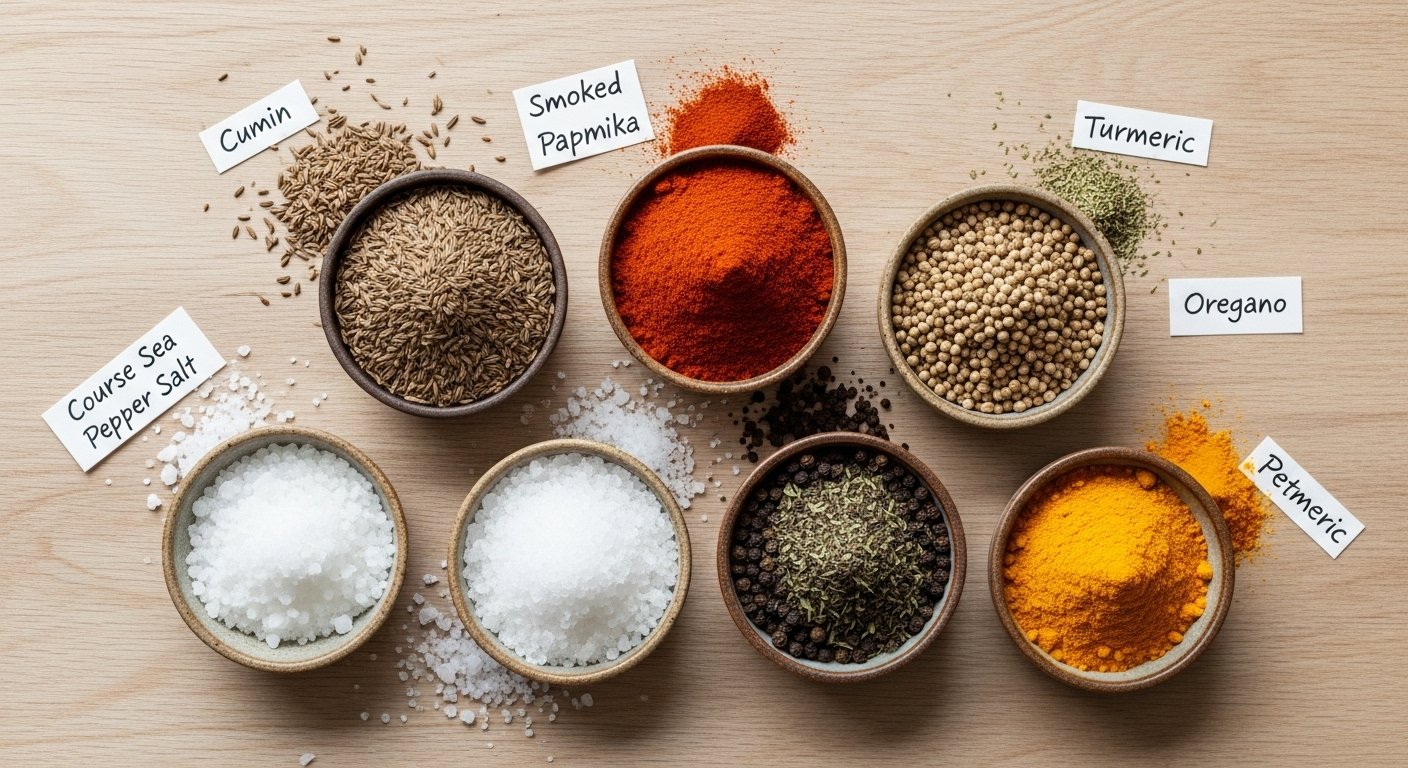
Exploring Must-Have Spice Blends
Spice blends are a fantastic shortcut to complex flavors. The spice blends segment is growing quickly, predicted to be the fastest-growing segment with a CAGR of 7.78% over the forecast period. Pre-mixed blends have even seen a 25% uptick in sales over the past two years. These blends can introduce you to new flavor profiles without requiring you to purchase many individual spices immediately. Some popular examples include:
Spices by Cuisine: Tailoring Your Collection
As your confidence grows, consider building your collection based on the cuisines you frequently cook. This approach helps you focus your spending and ensures you have the right spices on hand. For example:
Here’s a comparison of common spices and their typical uses:
How to Keep Spices Fresh: Maximizing Flavor and Longevity
The best spices are fresh spices. The way you store your spices directly impacts their flavor and potency. Many individuals ask, “How do you store spices to keep them fresh?” Proper storage is crucial for maintaining their vibrant aromas and tastes.
The Whole Spices vs. Ground Spices Debate
When considering how to build a flavorful spice rack, understanding the difference between `Whole Spices` and ground spices is important. Whole spices, like peppercorns or cumin seeds, retain their flavor for much longer because their aromatic oils are protected. Grinding a spice increases its surface area, speeding up oxidation and evaporation [13]. For optimal flavor, it is always best to buy whole spices and grind them as needed using a `Spice grinder` or mortar and pestle [13].
Optimal Spice Storage Conditions
Spices are sensitive to environmental factors. To ensure their longevity, always store them in `Air-tight containers`, away from `Light and heat protection` [2, 5]. A cool, dark pantry or cabinet is ideal. Avoid storing spices above the stove or dishwasher, as the fluctuating heat and humidity can quickly degrade their quality [2, 8]. Direct sunlight is also a major enemy of spice potency. The USDA indicates that while spices don’t spoil in a way that makes them unsafe, they do lose their flavor and potency over time. Whole spices can last 2 to 4 years, while ground spices are best within 2 to 3 years when properly stored [3, 5].
Understanding Spice Shelf Life
Even with perfect storage, spices won’t last forever. While dried spices are safe indefinitely, their flavor significantly diminishes over time [5]. Generally:
To check if a spice is still potent, simply smell it. If the aroma is faint or absent, it’s time to replace it [5]. Remember to date your spice jars when you fill them to help keep track of freshness.
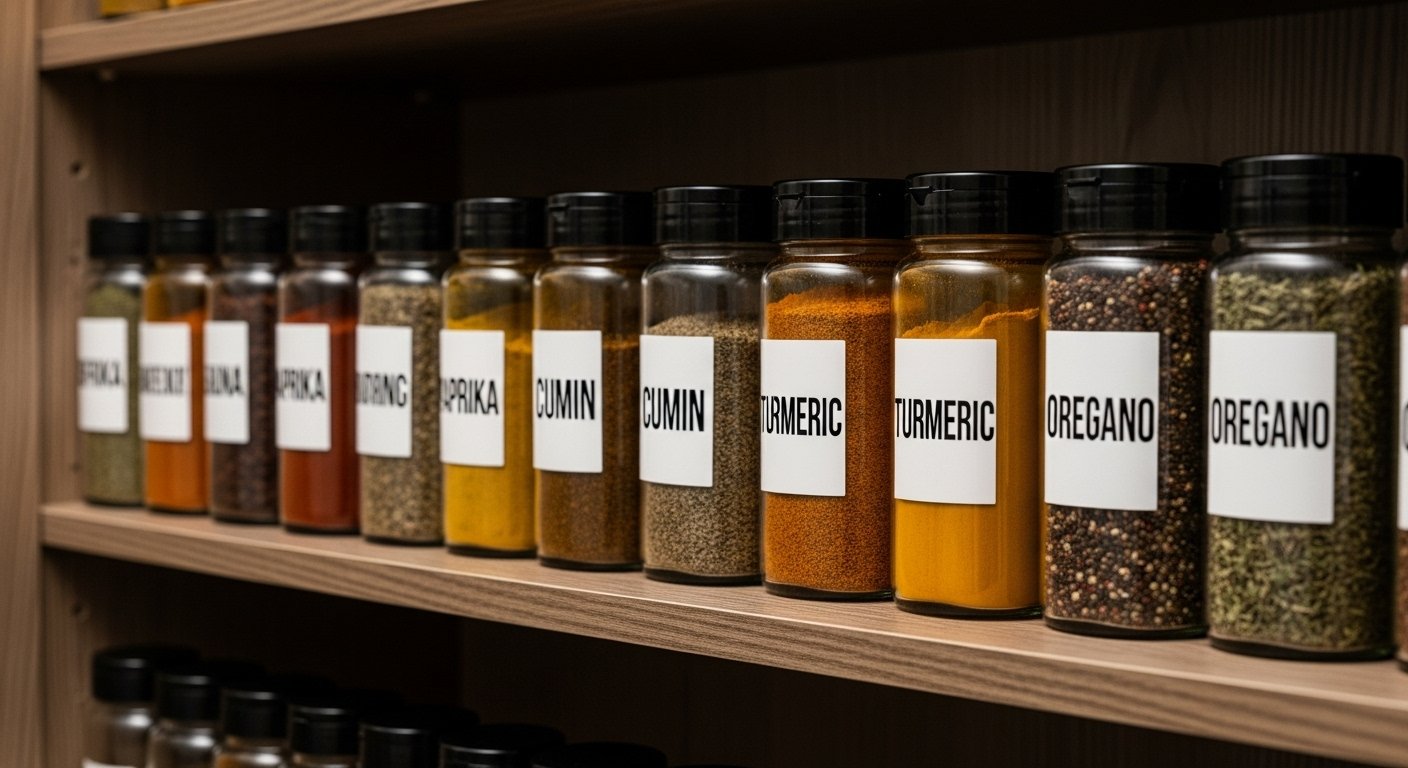
How to Organize Your Spice Rack Efficiently
A disorganized spice collection leads to frustration and wasted ingredients. Answering the question “How do I organize my spice rack efficiently?” is key to a smooth cooking experience. An efficient system means you can quickly find what you need, encouraging you to use your spices more often.
Assessing Your Kitchen Space: Finding the Ideal Spot
Before organizing, evaluate your kitchen. Where is the best place to store a spice rack in the kitchen? Consider proximity to your cooking area but away from direct heat and light. Options include a dedicated cabinet, a pantry shelf, or even a drawer. The ideal spot allows for easy access without compromising spice freshness.
Smart Spice Storage Ideas for Your Kitchen
There are numerous `spice storage ideas kitchen` solutions available to suit different spaces and preferences:
The Best Spice Jars with Labels
Uniformity is key to an aesthetically pleasing and functional spice rack. Investing in `best spice jars with labels` can transform your organization. Glass jars with tight-fitting lids are excellent for protecting spices from air and moisture. Ensure your labels are clear, legible, and ideally, placed on both the side and top of the jar for easy identification, especially if you use a `drawer spice organizer` [15, 18].
Arranging Your Spices Efficiently
Once you have your containers, decide on an organization system. Many people prefer to `organize spice cabinet` contents alphabetically for quick retrieval [15, 18]. Alternatively, you might group spices by cuisine (e.g., all Indian spices together) or by frequency of use, keeping your most-used items front and center. Experiment to find what works best for your cooking habits.
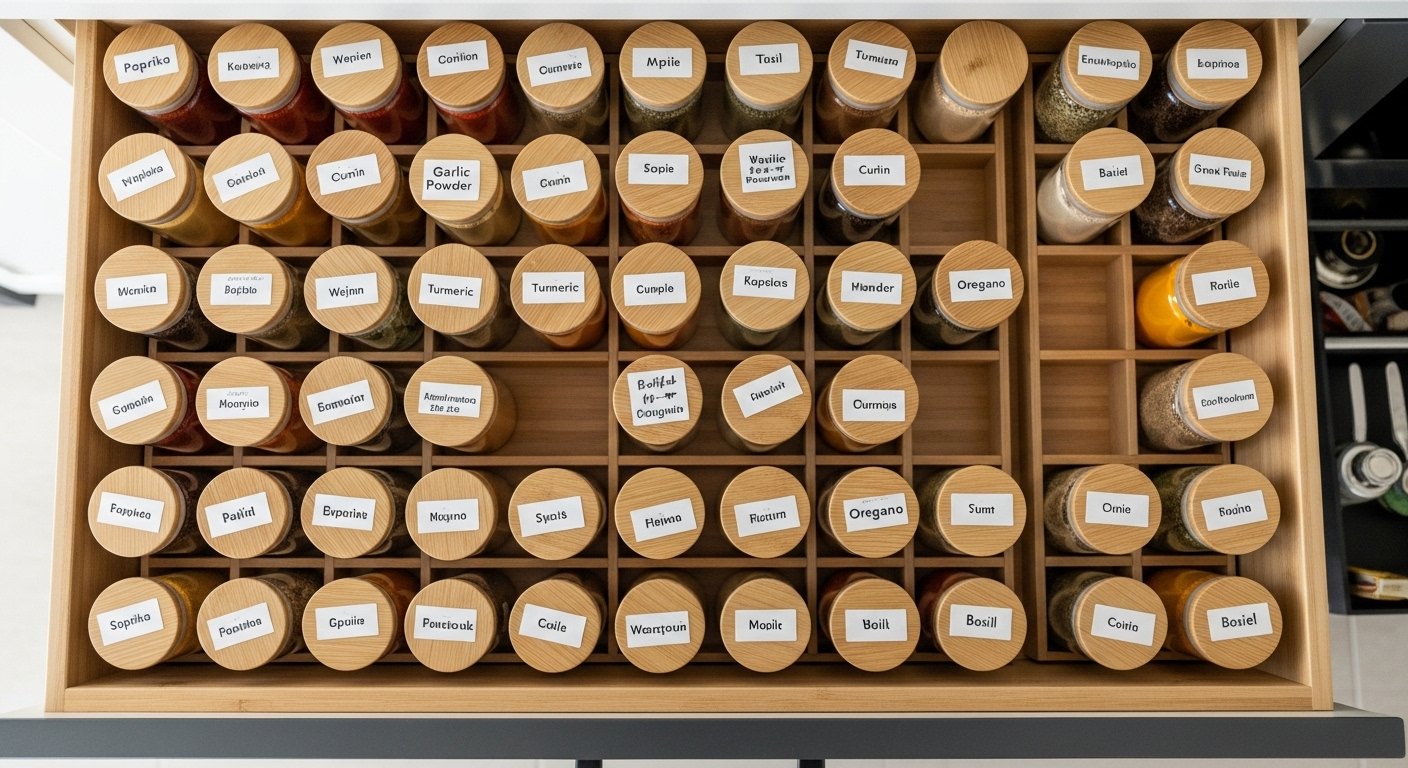
Building a Custom Spice Rack: DIY Spice Rack Plans
For those who enjoy a hands-on project, building a custom spice rack can be a rewarding experience. It allows you to tailor the design to your exact kitchen space and aesthetic preferences. This answers the question: “How can I build a DIY spice rack?”
Homemade Spice Rack Ideas: Design Considerations
Before starting, consider different `homemade spice rack ideas`. Do you want a simple shelf, a multi-tiered display, or a pull-out drawer insert? Think about the materials – wood is a popular choice for its durability and natural look. Measure your available space meticulously. Consider integrating it with existing kitchen elements. For tips on managing your indoor herb garden, which often shares storage considerations, check out Your First Herb Garden: Grow Herbs Indoors.
Steps for How to Build a Custom Spice Rack
Creating your own spice rack is a straightforward project that can significantly enhance your kitchen’s functionality. Here’s a basic guide on `how to build a custom spice rack`:
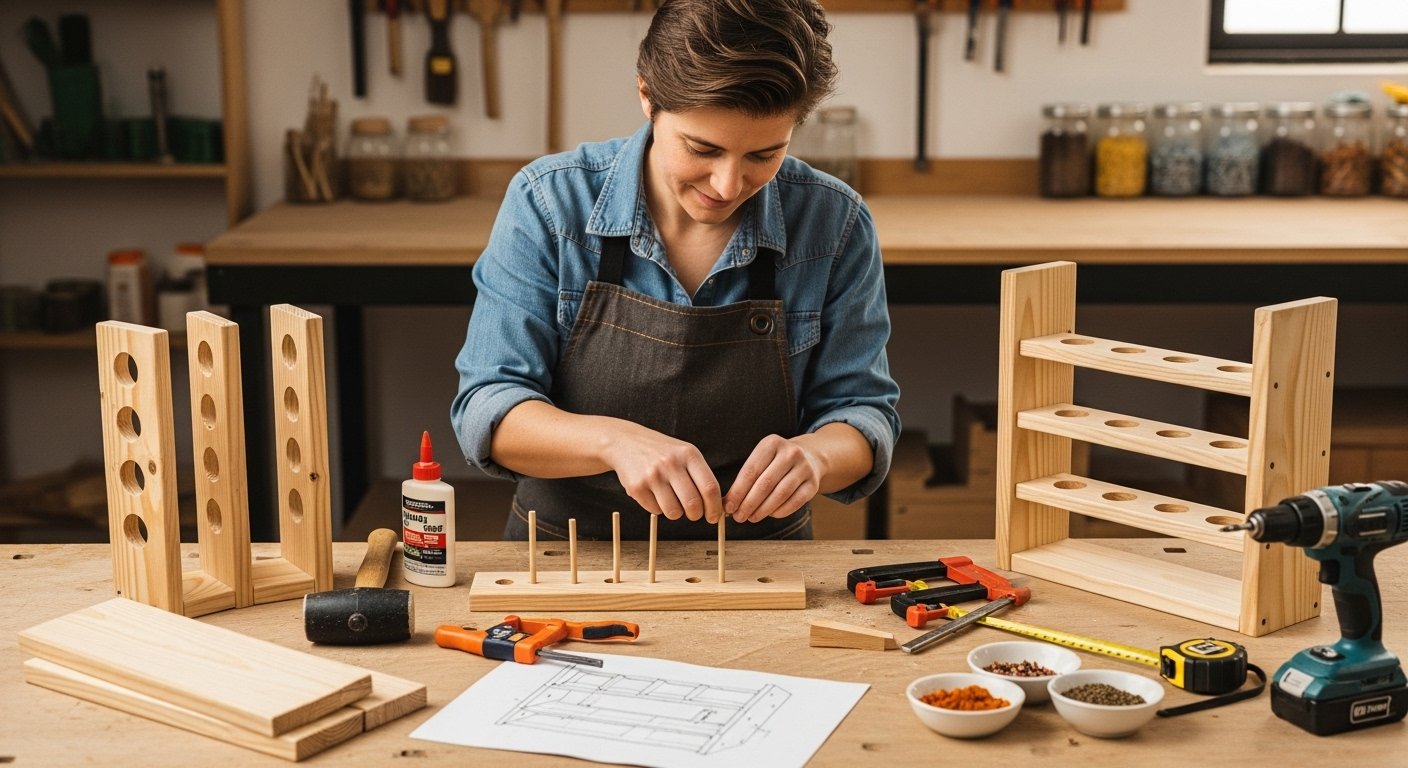
This DIY approach allows for precise customization, ensuring your spice rack fits perfectly and holds your chosen `spice jars` effectively. Integrating related items, such as fresh vs dried herbs cooking guide, can further enhance your kitchen efficiency.
Building a flavorful spice rack is an ongoing journey, but it’s one that promises endless culinary rewards. Begin with the essentials, focus on proper storage, and organize your collection in a way that makes sense for you. Soon, you’ll find yourself confidently reaching for the perfect spice, transforming everyday meals into extraordinary experiences.
Key Takeaways
- Start your flavorful spice rack with essential, versatile spices like cumin, smoked paprika, and coriander.
- Always prioritize proper storage by using airtight containers and keeping spices away from light and heat to maintain freshness.
- Organize your spice collection using methods like drawer inserts, tiered risers, or wall-mounted storage for easy access.
- Consider grinding whole spices yourself with a spice grinder for maximum flavor and potency.
- Embrace spice blends and explore spices by cuisine to expand your culinary repertoire and replicate restaurant-quality meals at home.
Frequently Asked Questions
What spices should be in a basic spice rack?
A basic spice rack should include versatile staples like Cumin, Smoked Paprika, Coriander, black peppercorns, garlic powder, onion powder, dried oregano, dried thyme, red pepper flakes, and cinnamon. These cover a wide range of cuisines.
How do you store spices to keep them fresh?
To keep spices fresh, store them in airtight containers in a cool, dark place, away from direct sunlight, heat sources (like the stove), and humidity. Whole spices last longer than ground spices.
Is it better to buy whole or ground spices?
It is generally better to buy whole spices and grind them as needed. Whole spices retain their essential oils and flavor for much longer than their ground counterparts, which lose potency faster due to increased surface area exposure to air.
What is the most flavorful spice?
Flavor is subjective, but spices like saffron, vanilla, and cardamom are often cited for their intense and complex flavor profiles. Freshly ground black pepper is also considered highly flavorful compared to pre-ground versions.
What types of spice organizers are available?
Many types of spice organizers exist to suit different kitchen layouts, including drawer spice organizers, tiered spice rack organizers for cabinets, wall-mounted spice storage, Lazy Susans, and magnetic spice tins. The best choice depends on your space and preference.
